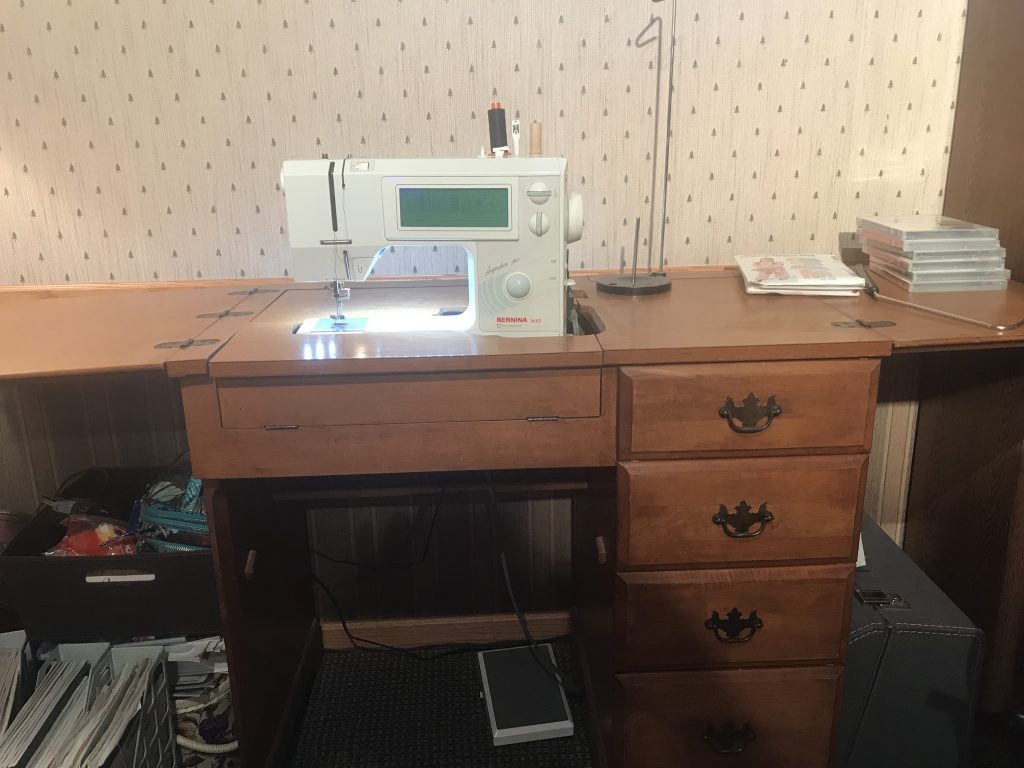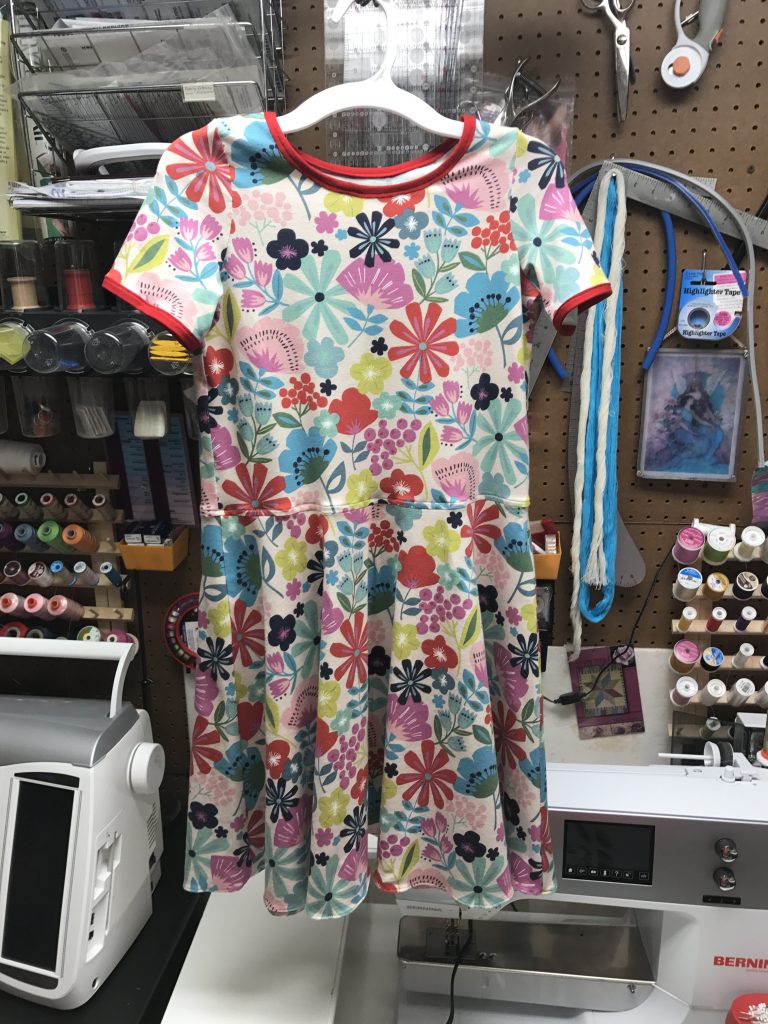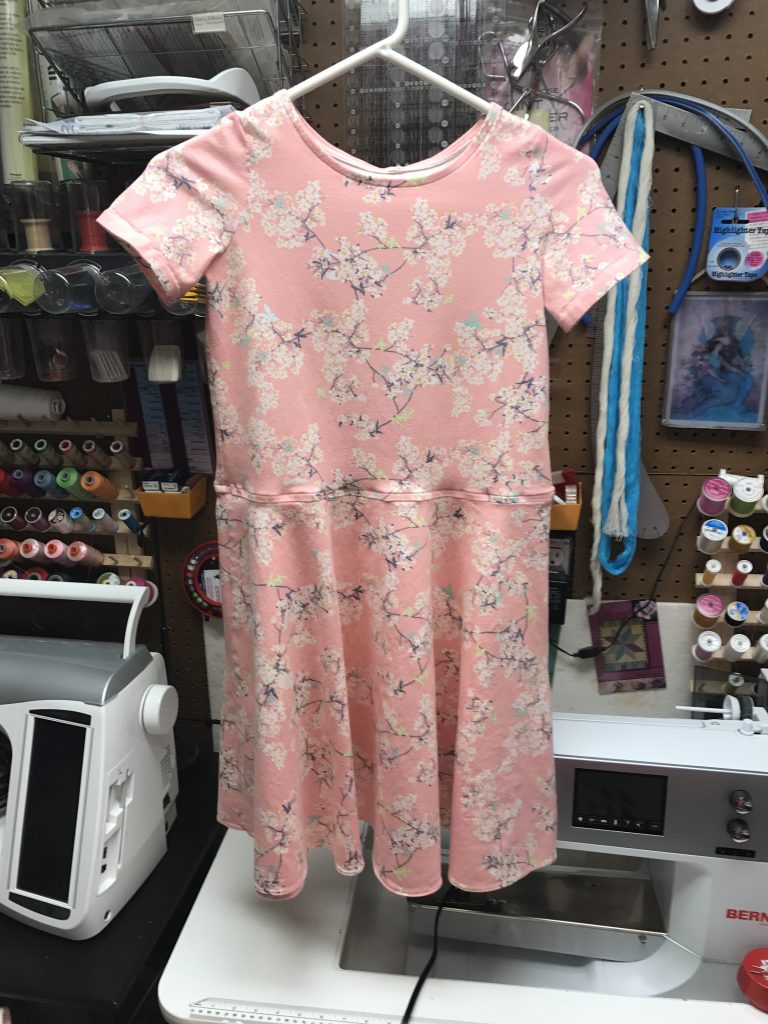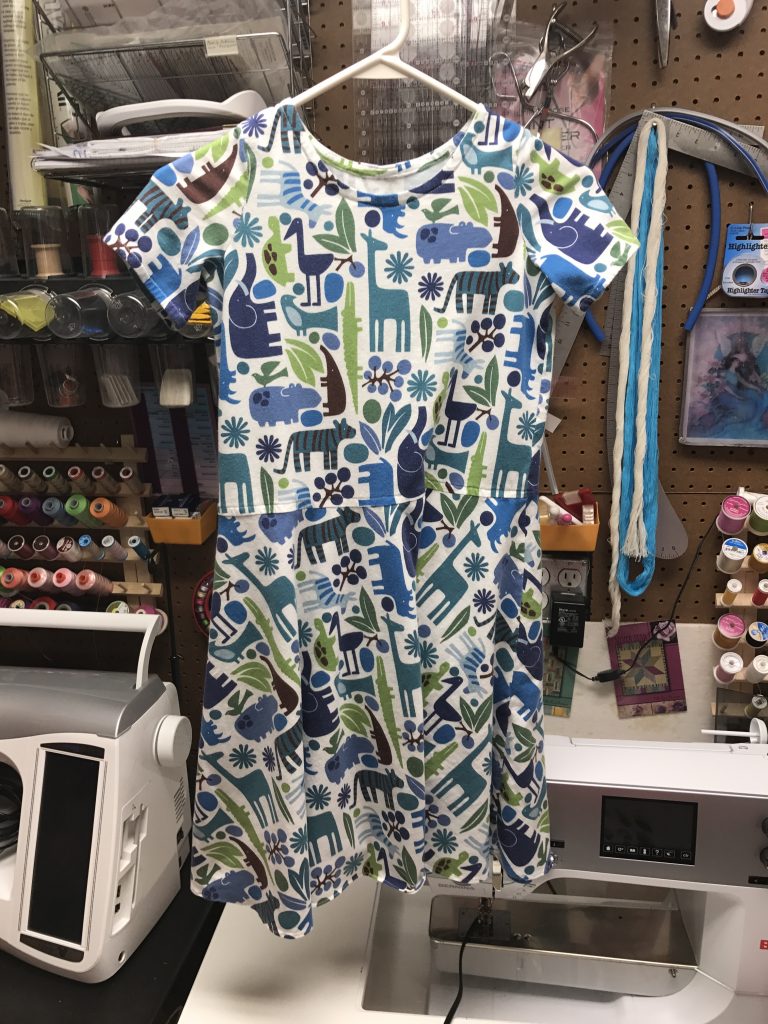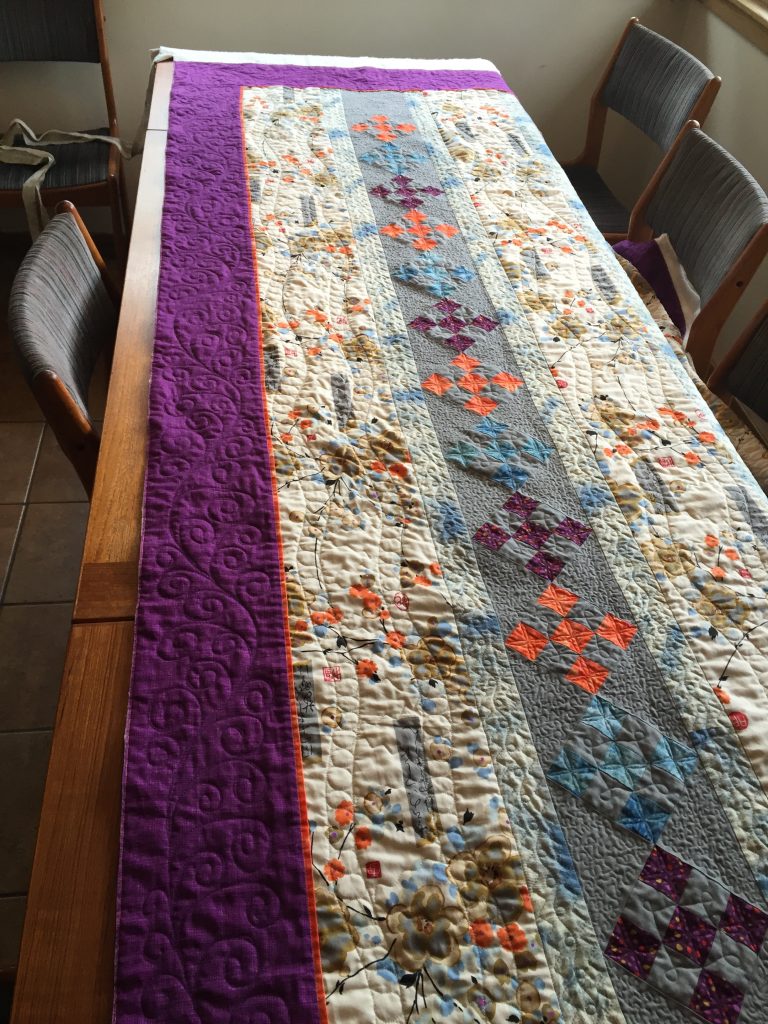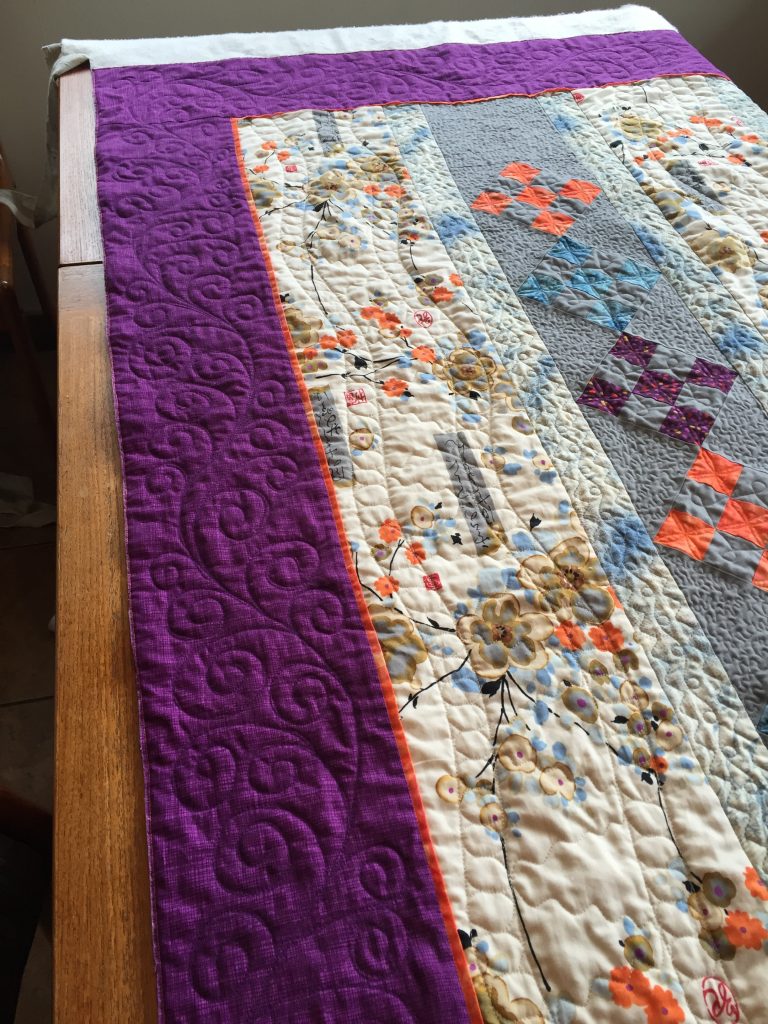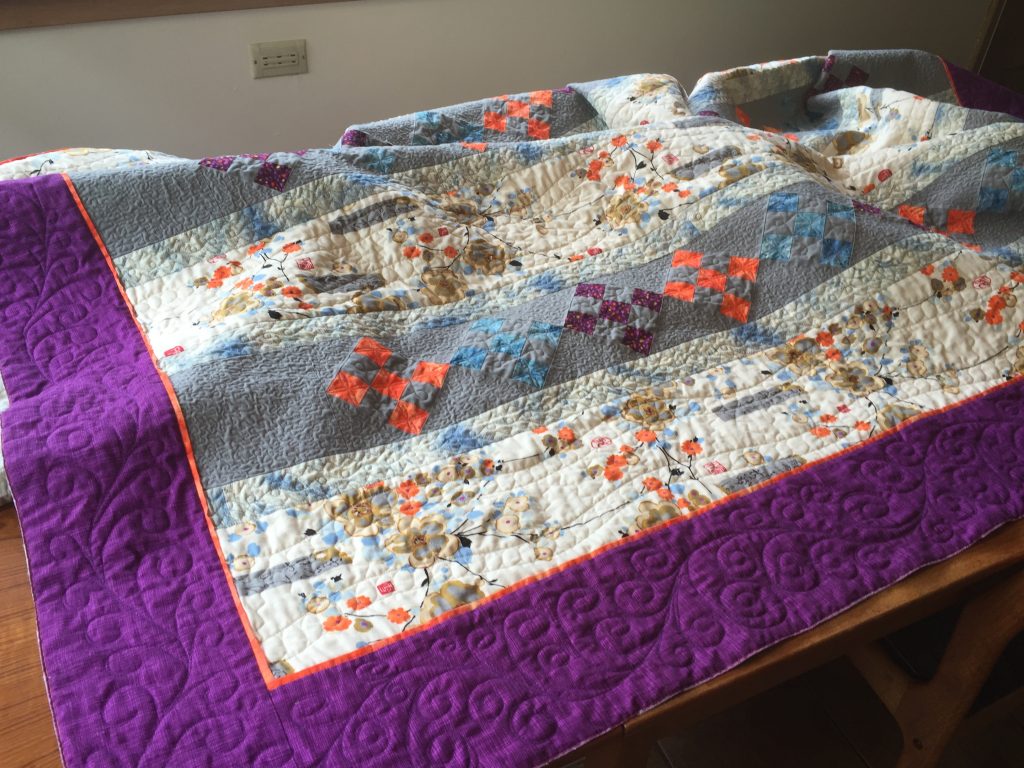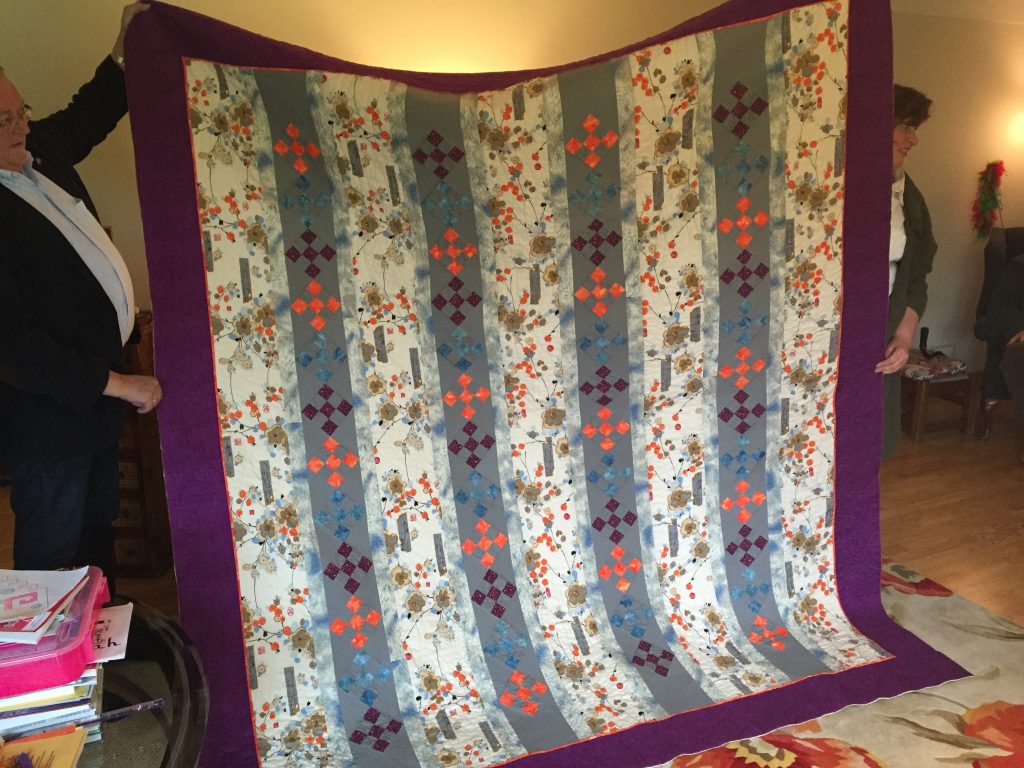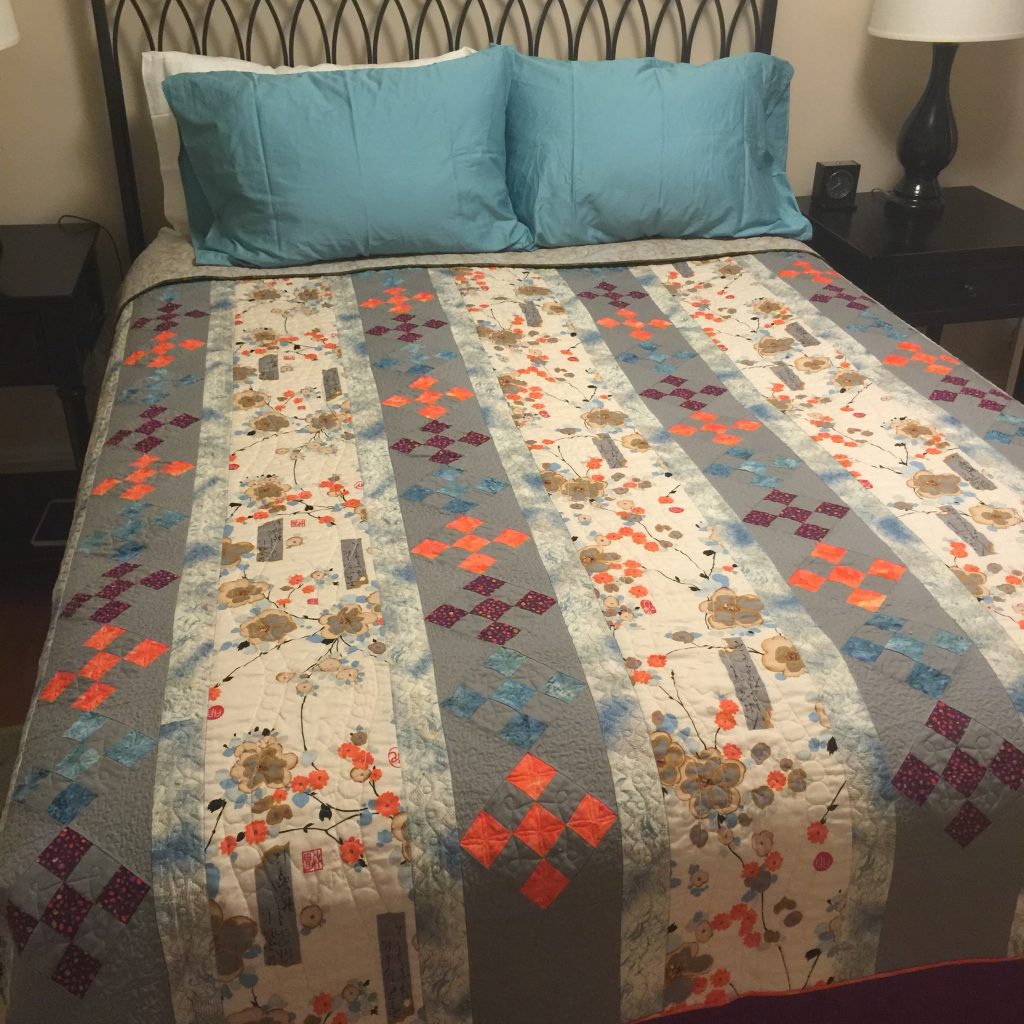Sometimes the kindest thing you can do for yourself is to forgive yourself for not knowing something when you didn’t know it. And being grateful instead that you have finally learned the lesson helps too.
Every since I begin making quilts in the spring of 1996, I have admired the machine quilting skills of others, especially those who make gorgeous quilts on their domestic machines at home. I machine quilted the first quilt I ever made, be it ever so badly, and after that almost always sent my quilts out to be quilted by a long-arm professional. I’ve never been disappointed with the results as I’ve always found long arm quilters who were exceptional at their craft, and adding their machine quilting skills to my piecing and design work was a collaboration I was happy to acknowledge. But as time has gone by, I’ve started making more quilt tops than I have money to get them quilted, and I also really started feeling this desire to make the entire quilt myself, to know that I was the creator of this quilt, for better or for worse, from beginning to end.
In November 2015 I took two machine quilting classes from Cindy Souder at the Minneapolis Sewing & Quilting Expo. It would not be an understatement to say that experience changed my life. Yes, she taught techniques, ones that I could duplicate at home and get good results – everything from using a walking foot to free motion quilting to using traced patterns. She gave lots of pointers, some of which I already knew, like the value of using quilting gloves (which work exceptionally well for me), using a silicone slider on the machine bed, and about ergonomics and so forth. But what she really taught me was something far more useful and elusive. She taught me confidence. And that is no small feat! She taught me how to get over that fear of looking at the quilt and the machine and going “Nope – someone else is gonna do that!” I left those two classes absolutely knowing that I could, in fact, quilt my own quilts and, with practice, actually become good at it.
Now, if you know me, you know that these classes were where I also fell in love with the Bernina 770QE that we used in class to do all our work. I ended buying one of the classroom machines, as they offered them at a 33% discount when the weekend was done. And I was the only person who had sewn on machine #12 that whole weekend, so I knew very well how perfectly this machine worked. And it was a joy to get it home finally and begin some practice pieces. My greatest creative accomplishment this past year was finishing a quilt for Diana and Jonathan. It was a huge quilt, some 95″ x 115″, and was entirely quilted by me over a period of two to three months. It gave me a great sense of satisfaction to get that quilt done, and I had a lot of fun sewing it too!
A few months ago, I decided to make some pieced and quilted place mats. I wanted to use some of those beautiful heirloom-style stitches on my Viking Opal 690Q. Viking has some gorgeous decorative stitches that seem unique to them. I finished piecing the place mats some time ago, and pulled them out this week to figure out how to quilt them and get them finished. Since my 77QE was set up for another project, I decided to use my trusty old Bernina 1630, the sewing love of my life. I had recently acquired a #29 foot for my 1630, the clear quilting foot, and figured the smaller harp size on the 1630 wouldn’t present too much of a challenge for the small-ish place mats. I threaded up the machine, put on the new foot and my gloves and finally sat down to quilt them this weekend. And you know what? That 1630 free motion quilts like a DREAM! Utterly smooth, quiet, perfect tension top and bottom – just exquisite. And for 22 years I have had that machine, and for most of those 22 years I have wasted time wishing that I was a good machine quilter. But if you can never allow yourself to be a beginner at something, to even be bad at it, then how in the world are you ever going to gain the skill necessary to become good at it? And as I sat there thrilled at the results I was seeing taking place in front of me, I was also keenly aware of the time over these years that I wasted simply wishing to develop a skill for which I already possessed everything I needed – but I just didn’t know it. Perhaps if I had trusted myself a little more, I might have made a few more tentative attempts, might have learned how wonderful that 1630 really was for what I wanted to do. Don’t get me wrong, I still love the extra space and the super large bobbins of my 770QE – both things make good results easier and faster to achieve. But, honestly, when I think of the table runners, place mats, baby quilts, and other quilts I could have spent my time learning and working on, perfecting skills, instead of wasting those years only wishing for it … well, it gave me great pause.
Like I said, sometimes the kindest thing you can do for yourself is to forgive yourself for not knowing something when you didn’t know it.

